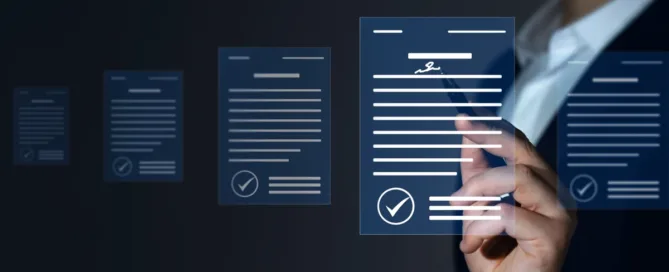The Unique Experience of Governments and the Public Sector in the GCC Region
We take a deeper look into how the need for administrative correspondence and communication systems grew in the government sector and how these systems differ from and overlap with previous solutions such as document and content management systems. We also explore how this need is being met today and the factors that determine the features of these systems and their development plans.
Our research focuses on the GCC region, which we can say is the birthplace of administrative correspondence management systems as we know them today, and the largest user of such systems.
The digital transformation journey of the government sector in this region began over two decades ago with building IT infrastructures and acquiring the hardware and software that enabled government agencies to gradually automate their work and provide smart services to citizens, businesses and other stakeholders. Initially the focus was on building essential systems that automate day-to-day operations and eliminate or reduce the need for paper-based processes. At the same time, government agencies needed to archive decades of paper documents and integrate them with the new procedures, so there was an urgent need to use archiving and document management systems as well as records management systems.
This took place at a time where the more developed countries were transitioning from Document Management Systems (DMS) to Enterprise Content Management Systems (ECM) after realizing the importance, vitality and time-sensitiveness of content and information within documents, which enabled organizations to make better use of their documents. This continuous evolution created confusion among government institutions in the region and prompted many of them to constantly replace systems. Some of them used simple systems that failed to meet all their needs, while others used very advanced solutions that exceeded their needs and budget without achieving desired results.
These systems continued to evolve and become more complex in ways that did not correspond to the needs of this region. For example, the leading IT research firm Gartner had redefined Enterprise Content Management (ECM) systems to transition into Content Services Platforms (CSP) in an attempt to steer away from closed monolithic systems and data warehouses towards open data and services. They also changed the Magic Quadrant for these systems from ECM to CSP in 2017. Global ECM players followed suit and adopted the new definitions and revised their development plans to keep pace with this trend.
The governments of the GCC region eventually realized that they need to scratch their own itch. Instead of playing catch-up with global models that may not work, they needed to find and develop solution that meet their unique requirements.
Most of the economies of this region (which collectively constitute the fifth largest economy in the world) are emerging economies that rely heavily on raw materials, trade and services. The countries of this region are also characterized by the presence of a large foreign workforce and a large volume of foreign trade. The government sector in these countries is fairly new and has seen rapid and tremendous changes to keep up with the economic growth and increase in population. There is a massive administrative and organizational burden on these government agencies to manage all the different projects and initiatives and the available resources and budgets. This administrative burden translates into a huge amount of coordination, meetings, official correspondences and communications between various government agencies as well as internally between their departments.
These government agencies couldn’t find what they were looking for in the international DMSs, ECMs, CSPs and even Mailroom Automation Systems. These solutions didn’t meet their needs in terms of managing administrative correspondences and communications. So they decided to develop their own. The IT departments of these different entities worked hard to build integrated solutions from the ground up to meet their needs, and in some cases they developed them as extensions to already existing content management systems.
Fast forward a few years, international players discovered this trend, but they did not have ready-made solutions for it. They did not even have a classification for it. Some of them only saw outdated protocols and concepts that had to be replaced by newer methods. Even global research companies did not have a clear classification of such systems. Are they Case Management Systems or Business Process Management Systems, Content Management or Document Management or Customer Communication Management Systems or all of these together? Because of the absence of a classification and a clear understanding of the users of these systems (the government agencies in this region), none of the international players had anything useful to offer or even a clear development roadmap to fulfill these needs. The majority of systems currently used by government agencies in the region were developed locally and according to specific cases, and they later transformed into marketable standalone products.
For the first time, international companies sought to enter this market (after realizing the size of the opportunity) through partnerships with local developers, mergers and acquisitions, or by developing new solutions, rather than by offering their global products. In this regard we believe that this is a unique phenomenon and experience that calls for further research.
We at NVSSoft are among the first companies to work on the development of Administrative Correspondence and Communication Management Systems. We developed Tarasol, a smart collaboration platform that brings together five major components that meet the specific needs of the government sector in the region, which are correspondence, meetings, tasks, workflows, ad document management and archiving. We have succeeded in implementing Tarasol at numerous government agencies in KSA, UAE, Kuwait and Oman, and we continue to develop and improve our solutions to keep pace with this pioneering trend.





